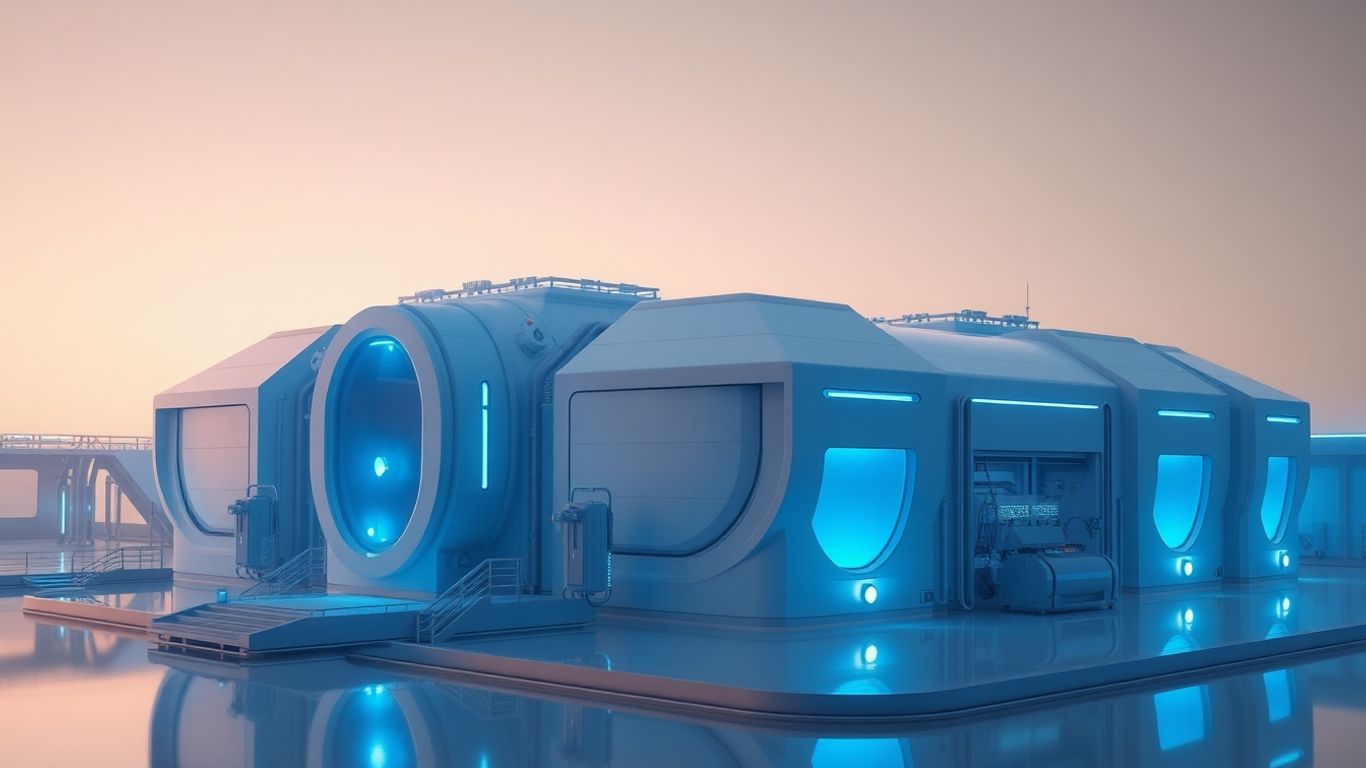Poland is making significant strides in its energy transition by advancing its nuclear strategy, with a particular focus on the deployment of Small Modular Reactors (SMRs). This move aims to reduce reliance on coal and bolster energy security while meeting ambitious climate goals.
Key Takeaways
- Poland plans to build its first SMR in Włocławek, utilizing GE Hitachi’s BWRX-300 technology.
- The project is a joint venture between Orlen and Synthos Green Energy, with significant backing from US agencies.
- SMRs are seen as a crucial component for decarbonizing Poland’s energy sector and industrial processes.
Poland’s Nuclear Strategy and SMR Integration
Poland’s energy sector is heavily reliant on coal, presenting a significant challenge for its decarbonization efforts. To address this, the country is prioritizing nuclear energy, with a strong public endorsement for its development. A recent analysis suggests that nuclear power could account for a substantial portion of Poland’s electricity generation by 2050, playing a vital role in meeting climate targets. The Clean Air Task Force (CATF) has recommended integrating a clear role for SMRs into Poland’s updated nuclear strategy, emphasizing their potential for industrial applications and district heating.
The Włocławek SMR Project
State-owned energy company Orlen, in partnership with Synthos Green Energy, has announced Włocławek as the site for Poland’s first SMR. The project will employ GE Hitachi’s BWRX-300 technology, marking the first deployment of this kind in Europe. This joint venture, OSGE, has secured agreements for technology access and received substantial support from US government agencies. Despite initial negotiations, Orlen and Synthos Green Energy have finalized terms for their collaboration, ensuring Orlen’s control over strategic matters and direct access to the SMR technology.
Advantages and Future Outlook of SMRs
SMRs, with their smaller footprint and modular design, offer advantages such as faster and more cost-effective installation, suitability for various locations including former coal plant sites, and the ability to provide process heat for industrial applications. They are also seen as a way to enhance grid stability and security. Poland aims to generate 23% of its electricity from nuclear sources by 2040, with SMRs expected to play a key role in achieving this objective. The country is also exploring synergies between gigawatt-scale nuclear plants and SMRs to create a comprehensive and resilient nuclear energy infrastructure.
International Collaboration and Recommendations
CATF also recommends strengthening cross-regional and international collaboration to enhance Poland’s nuclear capabilities. This includes fostering partnerships with neighboring countries to share best practices and develop coordinated supply chains. Poland could also position itself as a hub for nuclear skills and services. Key recommendations for Poland’s nuclear program include updating economic modeling, defining a clear role for SMRs, establishing synergies between different reactor scales, presenting a clear vision for a second nuclear power plant (EJ2), abandoning plans for spent fuel reprocessing due to proliferation risks, and enhancing international cooperation.
Key Takeaways
- Strengthening Poland’s Nuclear Strategy through Financing, Small Modular Reactors, and International
Collaboration – Clean Air Task Force, Clean Air Task Force. - Poland will build its first small modular reactor, Innovation Origins.
- Site of Poland’s first SMR selected, World Nuclear News.












